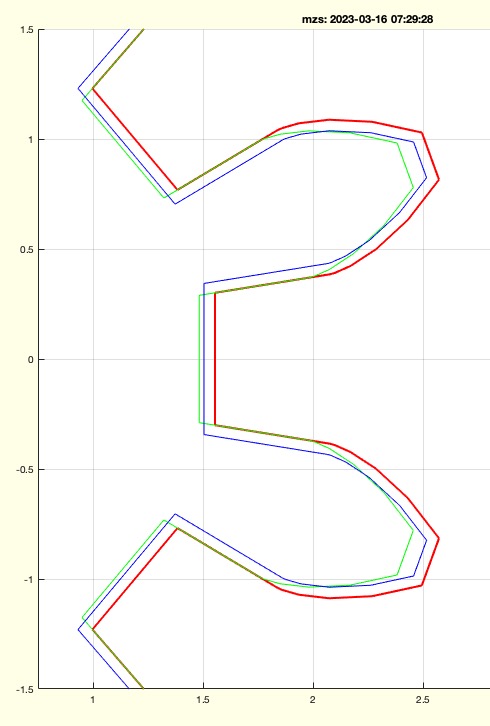mzs
by Tim C. Lueth, SG-Lib Toolbox: SolidGeometry 5.6 - Kinematics and Frames
Introduced first in SolidGeometry 5.3, Creation date: 2023-03-15, Last change: 2025-09-15
returns a modified module for a giben number of teeth and slot
Description
It is still unclear to TL which modification is better.
See Also: PLgearDIN
, SGgearDINrot
, SGgearchain
Example Illustration

Syntax
mr=mzs([m,z,s])
Input Parameter
m: | | module |
z: | | number of teeth |
s: | | slot; default is slfit ('t') % transition fit |
Output Parameter
mr: | | reduced module to guaranteee the slot size |
Examples
mzs(1,9,0.1)
Copyright 2023-2025 Tim C. Lueth. All rights reserved. The code is the property of Tim C. Lueth and may not be redistributed or modified without explicit written permission. This software may be used free of charge for academic research and teaching purposes only. Commercial use, redistribution, modification, or reverse engineering is strictly prohibited. Access to source code is restricted and granted only under specific agreements. For licensing inquiries or commercial use, please contact: Tim C. Lueth
Algorithm (Workflow)
This algorithm is designed to calculate a modified module for a given number of teeth and slot size. It is part of the SolidGeometry library and was introduced in version 5.3. The function is named mzs and is authored by Tim Lueth.
Input Parameters
- m: The module, which is a measure of the size of the gear teeth.
- z: The number of teeth on the gear.
- s: The slot size, with a default value determined by the function
slfit('b'), which represents a transition fit.
Output
- mr: The reduced module, calculated to ensure the slot size is maintained.
Algorithm Steps
- The function
getfuncparams is used to retrieve the input parameters m, z, and s from the variable arguments varargin. Default values are provided if these parameters are not explicitly given.
- If the input
m is a vector with three elements, the function assigns s to the third element, z to the second, and m to the first.
- The reduced module
mr is calculated using the formula: mr = -(2*s - m*z)/z.
- If no output is requested (i.e.,
nargout == 0), the function proceeds to visualize the gear profiles:
- It generates the original gear profile
PL1 using PLgearDIN(m,z).
- It generates the reduced gear profile
PL2 using PLgearDIN(mr,z).
- It creates a buffered profile
PL3 using CPLbuffer(PL1,-s/2).
- The function then plots these profiles using
CPLplot with different colors: red for the original, green for the reduced, and blue for the buffered profile.
- The axis limits are set based on the module and number of teeth, with a buffer of
3*m in all directions.
- An annotation is added to the plot to describe the color coding and the values of
r and s.
Algorithm explaination created using ChatGPT on 2025-08-18 07:32. (Please note: No guarantee for the correctness of this explanation)
Last html export of this page out of FM database by TL: 2025-09-21